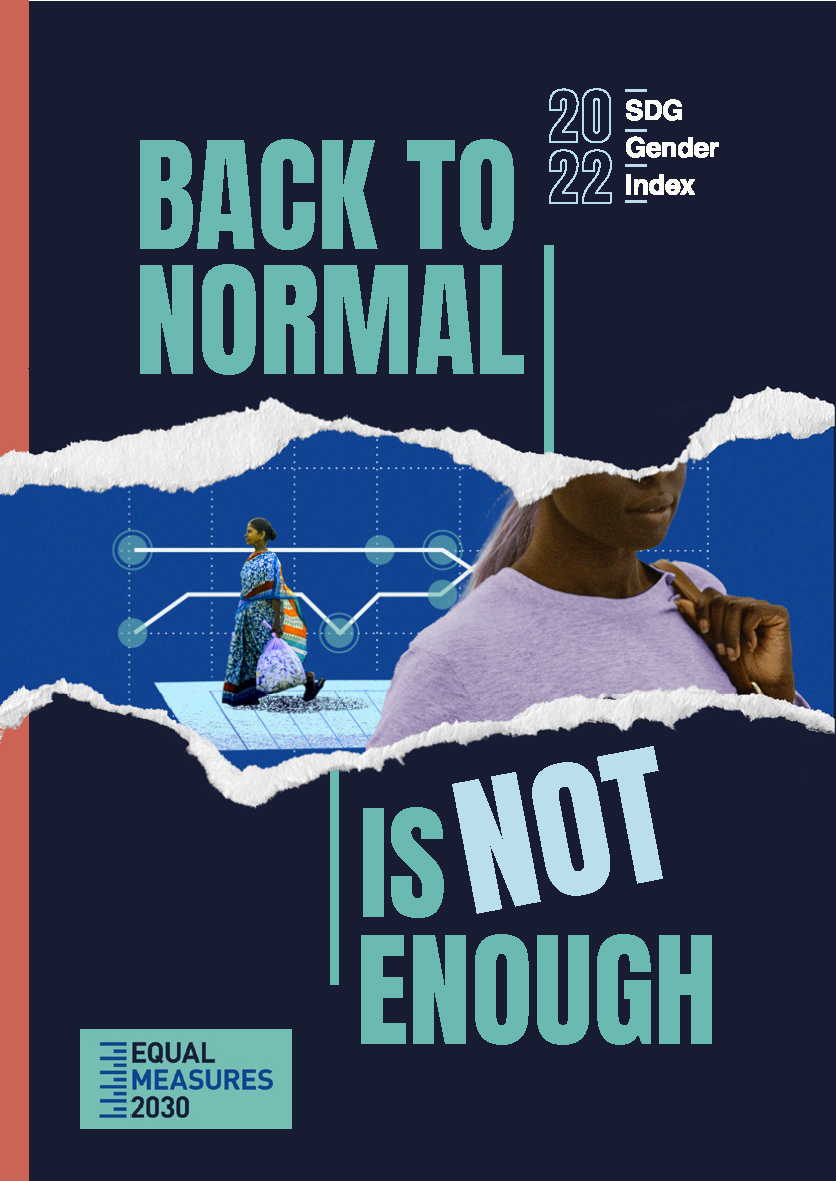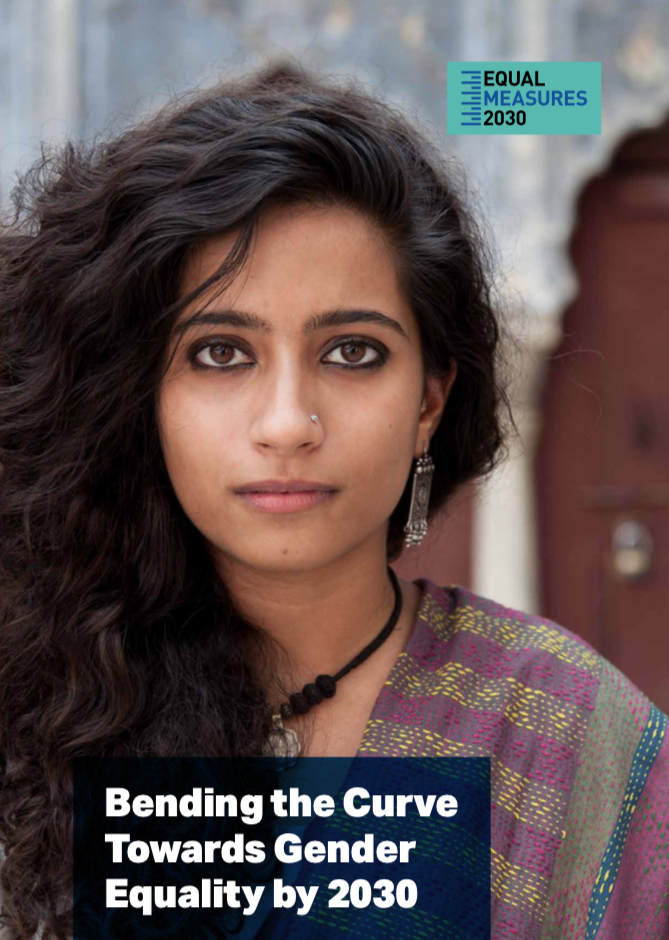4 mins
Our new research report finds that half of countries studied (67 out of 129 countries) – home to 2.1 billion girls and women – won’t achieve any of five key gender equality targets by 2030 if their current pace continues. The report covers: access to contraception, girls’ education, political leadership, workplace equality laws, and safety. However, the report also finds that if all countries matched the pace of fast-moving countries over the next decade, nearly three quarters of the world’s girls’ and women could instead live in countries that would reach four or even all five of these gender equality targets by the year 2030.
Key Findings
The analysis overwhelmingly shows that we need to pick up the pace of progress for girls and women – and some countries demonstrate that rapid change is possible. At a global level, each issue is trending in the right direction – but diving deeper, we can see that progress cannot be taken for granted. Some countries are stagnating or even moving backwards on key issues. And globally, we are not even close to being on track to reaching these five key gender equality targets by 2030. The analysis finds that:
- Countries are not moving fast enough: at current rates of progress, no country will achieve all five or even four out of five targets by the SDG deadline. Only 24 countries will achieve two or three of the five targets and 38 countries will achieve only one of the five gender equality targets by 2030. A full 67 countries (52 per cent) will not achieve any of the five targets by 2030 (see Figure 1). If all countries matched the pace of the fast-moving countries, however, almost all countries studied (123 out of 129) would achieve at least two targets.
- Several high-income countries are stagnating or even seeing reversals in progress on some issues: While high-income countries tend to have higher levels of gender equality overall (see Figure 3), a number of these richer countries have been moving at a very slow pace or even in the wrong direction on the issues studied. For example, Serbia and Japan saw access to family planning decrease over the past two decades.
- Progress is evident but not always consistent: For example, the pace of change in women’s representation in ministerial roles globally grew more quickly from 2000 to 2008 but has slowed down since 2008. Countries in North America and Europe that had the highest proportion of women ministers in 2001 (holding at least 20 per cent of cabinet roles) have since seen slower rates of progress towards parity than in the region overall. We may be moving in the right direction, but not nearly fast enough and not consistently.
- Looking issue by issue, there are countries that have made rapid progress towards gender equality over the past 10 to 20 years: For example, several countries (including Ghana, Angola, Belize, and Viet Nam amongst others) have been increasing the number of girls who complete secondary school by more than ten per cent per year since around 2000.
- Factors contributing to rapid progress vary by issue and by country, but common themes include government prioritisation and commitment, coordinated investment, implementation of equality-focused policies including quotas, and the influence of gender equality advocates and champions (including feminist movements). Systematic research about the factors behind the fast-moving countries on each issue is beyond the scope of this study but represents an important angle for future investigation.
- Renewed efforts are needed to reach the most vulnerable: Girls and women facing intersecting forms of discrimination are most likely to be left behind, even when progress is made for girls and women overall. For example, while violence against girls and women remains pervasive globally, some groups are more acutely affected: in the United States, “Native American and Alaska Native” women experience higher rates of gender-based violence than any other group; “First Nations and Inuit” women in Canada face violence at three times the rate of non-indigenous women.
- There is hope: some countries – across all regions of the world – are already moving at an accelerated pace on one or more of the five key gender equality issues studied. In this way, Bending the Curve provides a starting point for deeper evaluation of how change for girls and women can be accelerated and how success stories can be replicated in order to bend the curve towards gender equality by 2030.
Key Findings by Issue
Significant acceleration globally is needed on all of the gender equality issues studied, but the end target is closer on some issues than others:
- Progress on access to family planning needs to accelerate globally by three times to reach the target by 2030. This would lead to over 400 million more girls and women having access to contraception to plan if and when they have children than if the current pace continued to 2030.
- The world also needs to move three times faster than it has over the past 10 to 15 years to ensure that every girl completes secondary school by 2030. 85 million more girls would complete secondary school by 2030 if countries moved at this accelerated pace than if the current pace continues.
- Just 23 per cent of government minister posts globally are held by women and 77 million girls and women live in countries that do not have a single female minister. More than 650 million girls and women in 64 countries have never had an elected or appointed female head of state or government. Progress on this issue has slowed in recent years and 40 countries have moved backward since 2001.
- Progress needs to accelerate by nearly two times to ensure women are equally represented in the most powerful political positions by 2030.
- In 2009, just 16 countries (all in Europe and North America) received a top score of 100 (based on data from the World Bank) for their workplace equality laws. By 2020, this number more than doubled to 36 countries (spread across four regions). We need 93 countries to bring their laws up to this standard by 2030 to meet the target globally (an acceleration in pace of more than two times). Changes in workplace laws in the last decade have meant that 215 million more women are now entitled, in principle, to 14+ weeks paid maternity leave, among other benefits.
- Nearly half of women globally don’t feel safe walking at night and this figure has barely changed since 2006. In fact, perceptions of safety worsened in nearly half of countries studied between 2006–2018. At the current rate of progress we wouldn’t reach the target of all girls and women saying they feel safe walking at night until the year 2179 – more than six generations from now. Progress needs to accelerate by nearly 13 times times – the greatest acceleration needed across the five issues studied – to ensure that by 2030 every girl and woman reports feeling safe.

